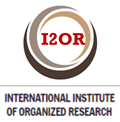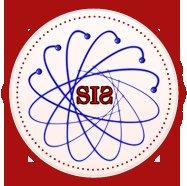Los bloques gemelos en el tratamiento de las maloclusiones clase III. Revisión sistemática.
Resumen
Palabras clave
Referencias
Segeur Serey K, Fuentes Kirsinger F, Sabando Franulic V, Donaire Arias F, Vásquez Huerta A. Prevalence of Malocclusion and Dental Caries Among Aymara Children in Colchane, Chile. Int. J. Odontostomat. 2020; 14(2): 191-7.
Zou J, Meng M, Law CS, Rao Y, Zhou X. Common dental diseases in children and malocclusion. Int J Oral Sci. 2018 Mar 13; 10(1): 7-14.
Angle E. Treatment of malocclusion of the teeth. En: Angle’s System. 7th ed. Philadelphia, S.S: White dental manufacturing Co; 1907.
Morales Fernández M. Bases genéticas de la maloclusión clase III esquelética. [Tesis]. Sevilla: Universidad de Sevilla; 2017. [citado 19/07/2022].Disponible en: https://idus.us.es/handle/11441/74326
Kale B, Buyukcavus MH. Comparison of three-dimensional soft-tissue evaluations between skeletal and pseudo-class III malocclusions. Sci Rep. 2020; 10(1): 14717-28.
Minase RA, Bhad WA, Doshi UH. Effectiveness of reverse twin block with lip pads-RME and face mask with RME in the early treatment of class III malocclusion. Prog Orthod. 2019; 20(1): 14.
Al Mozany SA, Dalci O, Almuzian M, Gonzalez C, Tarraf NE, Ali Darendeliler M. A novel method for treatment of Class III malocclusion in growing patients. Prog Orthod. 2017; 18(1): 40.
Čelar A, Tafaj E, Graf A, Lettner S. Association of anterior and posterior occlusal planes with different Angle and skeletal classes in permanent dentitions: A lateral cephalometric radiograph study. J Orofac Orthop. 2018; 79: 267–76.
Yang J, Li YZ, Liu Y, Zhang Q, Yuan X. Epidemiological survey of malocclusion in 8-9 year-old children in Qingdao Laoshan district. Shanghai Kou Qiang Yi Xue. 2019; 28(3): 284-7.
Akbari M, Lankarani KB, Honarvar B, Tabrizi R, Mirhadi H, Moosazadeh M. Prevalence of malocclusion among Iranian children: A systematic review and meta-analysis. Dent Res J (Isfahan). 2016; (5): 387-95.
González Hernández EM, Plaza Ruiz SP, Barrera Chaparro JP, Barreto Gómez LJ, Ríos Agudelo LM, Rojas Polanco EF. Aparatos funcionales preferidos por ortodoncistas en Colombia para tratar maloclusiones clases II y III. Univ. Odontol 2019; 38(80): 1-29.
Sarangal H, Namdev R, Garg S, Saini N, Singhal P. Treatment Modalities for Early Management of Class III Skeletal Malocclusion: A Case Series. Contemp Clin Dent. 2020; 11(1): 91-6.
Moher D, Liberati A, Tetzlaff J, Altman DG. The PRISMA Group. Preferred Reporting Items for Systematic Reviews and Meta-Analyses: The PRISMA Statement. PLoSMed. 2009; 6(7): e1000097-e103.
Fareen N, Alam MK, Khamis MF, Mokhtar N. Comparison of Soft Tissue Changes Produced by Two Different Appliances on Mixed Dentition Children. Biomed Res Int. 2021; (2021): 6612598-612.
Singh H, Kapoor P, Sharma P, Maurya RK, Mittal T. Skeletal Class III correction in permanent dentition using reverse twin block appliance and fixed mechanotherapy. Saudi Dent J. 2018; 30(4): 379-88.
Mittal M, Singh H, Kumar A, Sharma P. Reverse twin block for interceptive management of developing class III malocclusion. J Indian Soc Pedod Prev Dent. 2017 2021; 35: 86-9.
Ahmed M, Shaikh A, Fida M. Diagnostic validity of different cephalometric analyses for assessment of the sagittal skeletal pattern. Dental Press J Orthod. 2018; 23(5): 75-81.
Zere E, Chaudhari PK, Sharan J, Dhingra K, Tiwari N. Developing Class III malocclusions: challenges and solutions. Clin Cosmet Investig Dent. 2018; 10:99-116.
Otaño Lugo R. Diagnóstico de las anomalías dentomaxilofaciales. En: Ortodoncia [Internet]. La Habana: Ciencias Médicas; 2014. P. 92-112. [citado 20/07/2022]. Disponible en: http://www.bvs.sld.cu/libros_texto/ortodoncia/completo_ortodoncia.pdf
Bombonatti R, Aliaga del Castillo A, Soarez Bombonatti JF, Garib D, Tompson B, Janson G. Cephalometric and occlusal changes of Class III malocclusion treated with or without extractions. Dental Press J Orthod. 2020; 25(4): 24-32.
Van der Plas MC, Janssen KI, Pandis K, Livas Ch. Twin Block appliance with acrylic capping does not have a significant inhibitory effect on lower incisor proclination. Angle Orthod. 2017; 87(4): 513–8.
Gu M, Savoldi F, Hägg U, McGrath CPJ, Wong RW, Yang Y. Upper Airway Changes following Functional Treatment with the Headgear Herbst or Headgear Twin Block Appliance Assessed on Lateral Cephalograms and Magnetic Resonance Imaging. Scientific World J. 2019; (2019): 1807257.
Zhang JN, Chen S, Huang CY, Zhong C, Jin J, Yu FY, et al. Comparison of the effects of rapid maxillary expansion versus Twin Block appliance on mandibular growth in skeletal Class II patients. BMC Oral Health [Internet]. 2020 [citado 20 /07/2022]; (320). Disponible en: https://bmcoralhealth.biomedcentral.com/articles/10.1186/s12903-020-01344-8
Ajami S, Morovvat A, Khademi B, Jafarpour D, Babanouri N. Dentoskeletal
effects of class II malocclusion treatment with the modified Twin Block ap-
pliance. J Clin Exp Dent. 2019; 11(12): e1093-e8.
Salloum E, Millett DT, Kelly N, McIntyre GT, Cronin MS. Soft tissue changes: a comparison between changes caused by the construction bite and by successful treatment with a modified Twin-block appliance. Eur J Orthod. 2018; 40(5): 512-8.
Jiang YY, Sun L, Wang H, Zhao CY, Zhang WB. Three-dimensional cone beam computed tomography analysis of temporomandibular joint response to the Twin-block functional appliance. Korean J Orthod. 2020; 50(2): 86-97.
Shahamfar M, Atashi MH, Azima N. Soft Tissue Esthetic Changes Following a Modified Twin Block Appliance Therapy: A Prospective Study. Int J Clin Pediatr Dent. 2020; 13(3): 255-60.
Singh H, Kapoor P, Sharma P, Maurya RK, Mittal T. Skeletal Class III correction in permanent dentition using reverse twin block appliance and fixed mechanotherapy. Saudi Dent J. 2018; 30(4): 379-88.
Enlaces refback
- No hay ningún enlace refback.
Copyright (c) 2022 MULTIMED

Esta obra está bajo una licencia de Creative Commons Reconocimiento-NoComercial-CompartirIgual 4.0 Internacional.











